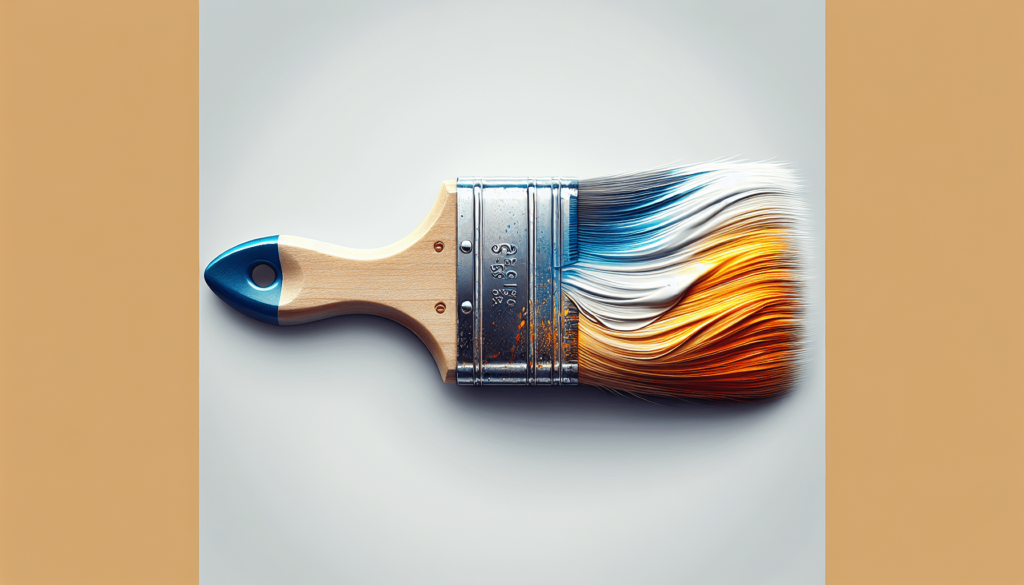When considering whether to apply latex paint over an existing oil-based paint, it is crucial to understand the compatibility and necessary preparation steps to ensure a durable and seamless finish. Proper surface preparation, including cleaning, sanding, and priming, is essential in facilitating the adherence of latex paint to an oil-based substrate. By following these precise steps, you can achieve a professional and lasting result that enhances the aesthetic and functional qualities of the painted surface.
In exploring the topic “Will Latex Paint Stick To Oil Based Paint,” this article delves into the essential aspects of paint compatibility and surface preparation. It provides a comprehensive guide on the necessary steps to ensure that latex paint properly adheres to a previously oil-based painted surface, thus ensuring a high-quality, durable finish. Will Latex Paint Stick to Oil Based Paint?
When embarking on a painting project, the question often arises: “Will latex paint stick to oil-based paint?” Understanding the compatibility of different types of paints is crucial for achieving a durable, aesthetically pleasing finish. This guide aims to provide you with comprehensive knowledge on whether latex paint can successfully adhere to oil-based paint, along with tips and techniques to ensure a satisfactory outcome.
Understanding Paint Types
Before diving into whether latex paint will stick to oil-based paint, it’s essential to understand the characteristics of each type. Both paints have distinct chemical compositions and properties that influence their behavior and application.
What is Latex Paint?
Latex paint, also known as acrylic paint, is a water-based paint known for its ease of use, quick drying time, and minimal odor. It is flexible and can expand and contract with the surface, making it suitable for various applications, including interior and exterior surfaces.
What is Oil-Based Paint?
Oil-based paint, sometimes referred to as alkyd paint, is known for its durability, smooth finish, and resistance to wear and tear. It takes longer to dry than latex paint and has a strong odor due to its solvent-based formula.
Why Consider Painting Over Oil-Based Paint With Latex Paint?
There are several reasons why you might want to apply latex paint over an existing oil-based paint surface:
- Ease of Use: Latex paint is easier to work with and clean up compared to oil-based paint.
- Environmental and Health Factors: Latex paint is low in volatile organic compounds (VOCs), making it a more environmentally friendly and healthier choice.
- Quick Drying: Latex paint dries much faster than oil-based paint, allowing for quicker project completion.

Can Latex Paint Stick to Oil-Based Paint?
The core question is whether latex paint can adhere to an oil-based painted surface. The short answer is yes, but some preparation is required to ensure proper adhesion.
The Science of Paint Adhesion
Paint adhesion is influenced by the surface tension and compatibility of the underlying layer. Oil-based paint creates a hard, non-porous surface that might repel latex unless the surface is appropriately prepared.
Steps to Ensure Latex Paint Sticks to Oil-Based Paint
To achieve a successful paint job, follow these detailed steps:
Step 1: Assess the Existing Paint
Firstly, determine whether the existing paint is indeed oil-based. You can do this by performing a simple test:
- Test with Alcohol: Dampen a cotton ball or cloth with rubbing alcohol and rub it on the painted surface. If the paint softens and comes off, it is likely latex-based. If it remains unchanged, it is likely oil-based.
Step 2: Clean the Surface
Cleanliness is vital for paint adhesion. Paint will not adhere well to dirty or greasy surfaces.
- Wash the Surface: Use a mixture of warm water and mild detergent to clean the surface. Rinse thoroughly with clean water.
- Remove Stains: Use trisodium phosphate (TSP) or a similar cleaner to remove stubborn stains.
Step 3: Sand the Surface
Sanding creates a rough texture that will help the latex paint adhere to the oil-based paint.
- Choose the Right Grit: Use 220-grit sandpaper for light sanding.
- Sand Evenly: Sand the entire surface lightly to scuff the glossy finish of the oil-based paint. Avoid sanding too hard to prevent damaging the painted surface.
Step 4: Remove Dust
After sanding, remove the dust thoroughly to ensure a clean painting surface.
- Use a Tack Cloth: Wipe the sanded surface with a tack cloth to remove all dust particles.
Step 5: Apply a Primer
Priming is essential when painting over oil-based paint with latex paint. It creates a bonding layer between the old and new paint.
- Choose the Right Primer: Use a high-quality bonding primer that is designed to adhere to glossy surfaces.
- Apply Evenly: Apply the primer evenly over the entire surface and allow it to dry according to the manufacturer’s instructions.
Step 6: Apply Latex Paint
Now, you’re ready to apply the latex paint.
- Use the Right Tools: Use a high-quality brush or roller for application.
- Apply Multiple Coats: For a smooth, even finish, apply multiple thin coats, allowing each coat to dry completely before applying the next.

Common Problems and Solutions
While transitioning from oil-based to latex paint, you may encounter some common issues. Here’s how to address them:
Peeling Paint
Peeling can occur if the surface was not adequately prepared.
- Solution: Sand the peeling area, clean it thoroughly, and reapply primer and paint.
Poor Adhesion
If the latex paint doesn’t stick well to the primed surface, it could be due to inadequate sanding or priming.
- Solution: Sand the surface again, apply a fresh coat of primer, and repaint.
Durability Comparisons
How does the durability of latex paint compare to that of oil-based paint? While oil-based paint is known for its toughness, latex paint, when properly applied, can also provide a long-lasting finish. Here’s a comparison table for quick reference:
| Feature | Oil-Based Paint | Latex Paint |
|---|---|---|
| Drying Time | Longer | Shorter |
| VOC Levels | Higher | Lower |
| Ease of Cleaning | Solvent (e.g., turpentine) | Water and Soap |
| Durability | Very Durable | Durable |
| Flexibility | Less Flexible | More Flexible |
| Odor | Strong | Minimal |
Environmental Considerations
Given the growing concern for environmental sustainability, transitioning to latex paint has definitive benefits:
- Lower VOCs: Latex paints generally have lower levels of VOCs, making them a greener choice.
- Less Hazardous Waste: Cleanup and disposal of latex paint are simpler and less hazardous compared to oil-based paint.
Professional Insights
Consulting painting professionals can provide further assurance and expert techniques for transitioning from oil-based to latex paint. Here are some insights:
Consult a Professional
Seeking advice or services from professional painters ensures that all steps are correctly followed for the best results.
- Experience Matters: Professionals have the experience to handle any unforeseen issues that may arise during the painting process.
- Quality Assurance: Professional painters guarantee high-quality work, saving you time and effort in the long run.
Professional Products
Sometimes, professional-grade primers and paints offer superior adhesion and finish. This ensures the longevity and aesthetic appeal of the painting project.
- Use High-Quality Materials: Higher-quality paints and primers cost more but provide better coverage and durability.
DIY vs Professional Painting
Deciding whether to tackle the project yourself or hire a professional can influence the outcome. Consider the following factors:
DIY Painting
If you choose to do it yourself, ensure you have the time and skills to follow all preparation steps meticulously.
- Cost-Effective: DIY can save money but requires time and effort.
- Learning Curve: There is a learning curve involved; following guidelines carefully is crucial.
Hiring Professionals
Professionals come with expertise and guarantees that can save you time and potential frustration.
- Higher Cost: Hiring professionals will be more expensive but may provide better results.
- Guaranteed Work: Professionals often offer warranties on their work, giving you peace of mind.
Conclusion
So, will latex paint stick to oil-based paint? Yes, it will, provided the surface is properly prepared. This preparation involves cleaning, sanding, and priming the existing oil-based paint before applying the latex paint. When done correctly, the transition from oil-based to latex paint can result in a durable, visually appealing finish that respects both your health and the environment.
By following the detailed steps and considering professional advice when necessary, you can ensure that your painting project is successful and long-lasting. Whether you choose to do it yourself or hire professionals, understanding the intricacies of paint compatibility and application techniques is key to achieving the best results.



